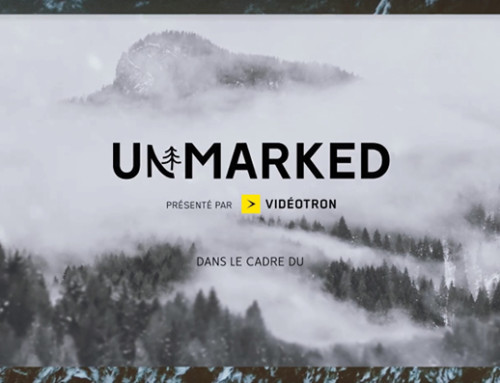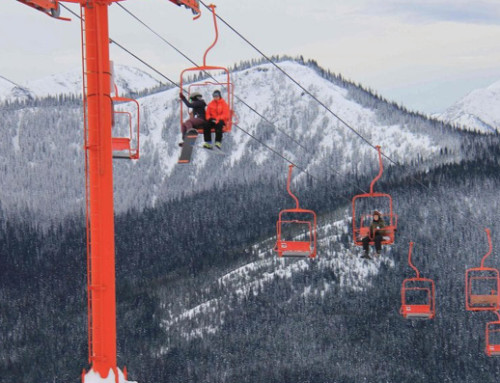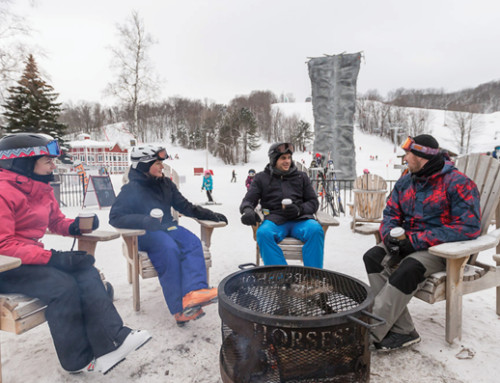Story courtesy:
After 14 years of publishing Mountain Life in Ontario, we finally gained access to The Vault—Blue Mountain Resort’s historical archive stretching back to 1941, the year Jozo Weider founded the resort. For this 75th-anniversary issue tribute, we’ve searched through many boxes of unseen material and conducted interviews with BMR insiders. We’ve selected these 75 images and anecdotes—in no particular order—that commemorate life at Blue since that long-ago first winter season of ‘41/’42. We hope you find them every bit as enlightening as we did.
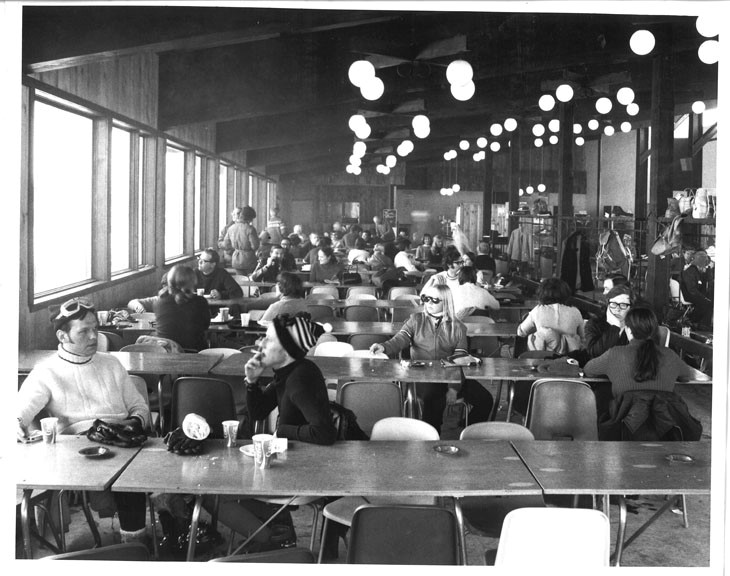
#1. JOZO’S JUMP
BMR founder Jozo Weider oversaw the construction of this 50-metre jump just a year before his death in a car accident in 1971. The jump was named in memory of Pete Pettersen, a Norwegian who had developed ski jumping programs in Ontario in the 1950s. The jump was the site of the North American ski jumping championships.
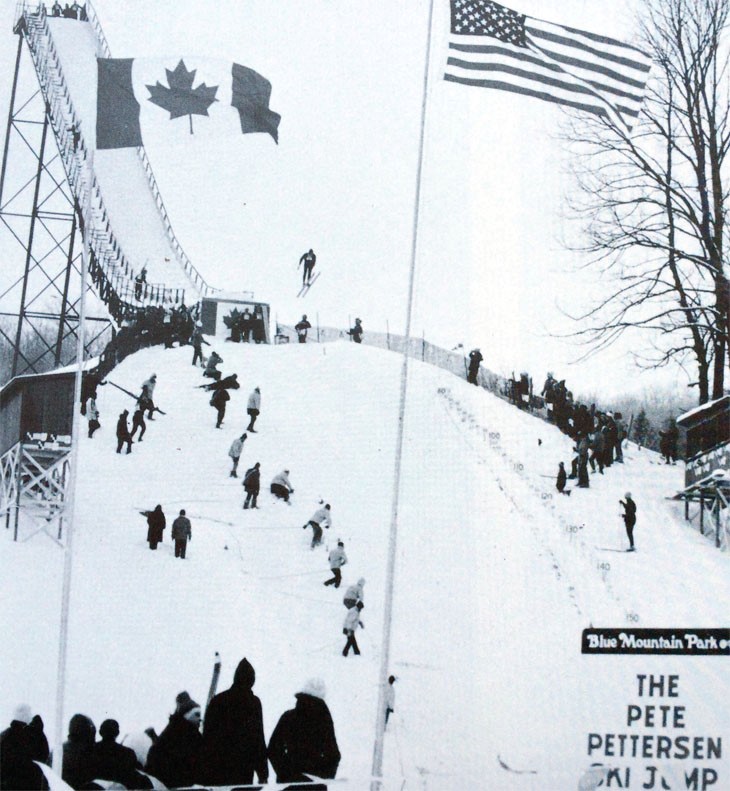
#2. EXPAT PAINTS BLUE
Czech-born Walter Trier (1890-1951) was an artist and illustrator of international repute who painted this cover of one of Blue’s earliest brochures. Back in Europe, Trier’s anti-Fascist cartoons had raised the ire of the Nazis and Trier fled to England as the Second World War broke out, then settled in Craigleith. Today there is a Walter Trier Gallery at the Art Gallery of Ontario with exhibitions of the artist’s watercolours, drawings and sculpture.
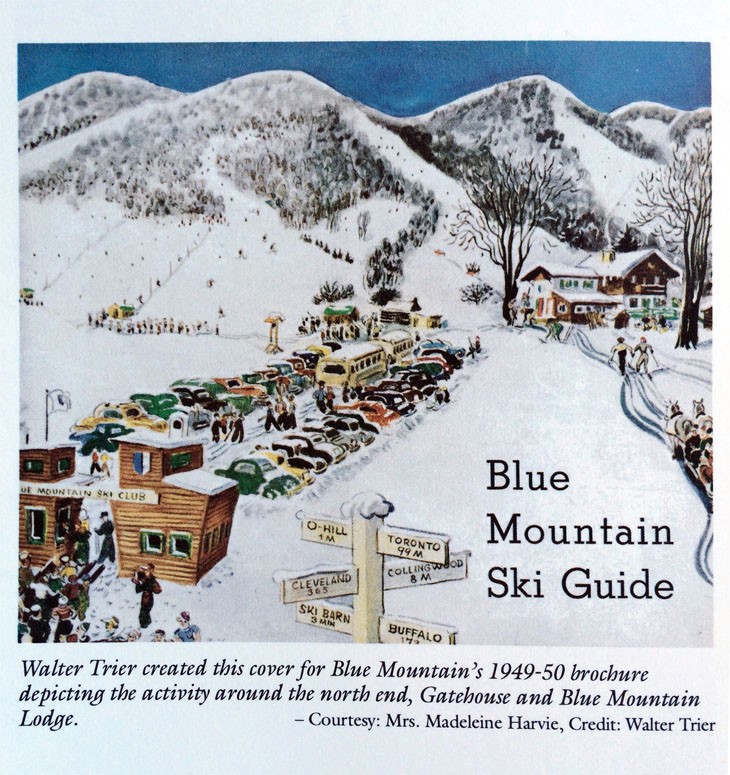
#3. GLADES OF BLUE
“The best fall lines are usually well established and identified by the tracks flowing off-trail and leading into the woods. The secret is finding a fall line that doesn’t end in a stream.” So said Blue Mountain President Dan Skelton in 2014, as Blue launched an expansion of its gladed areas.
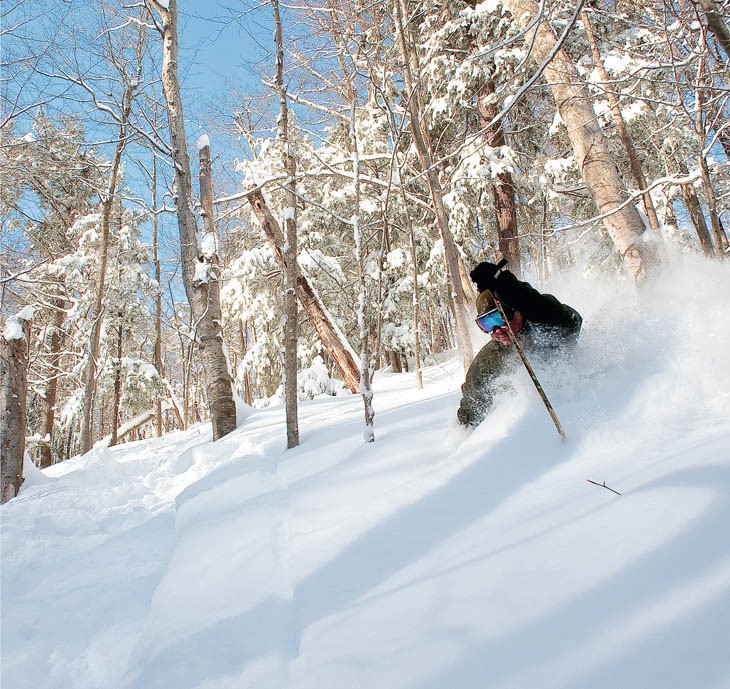
#4. THE SLOPESIDE SUNTAN
This was a whole new way to suntan slopeside on a mellow spring ski day: use your skis as back support!
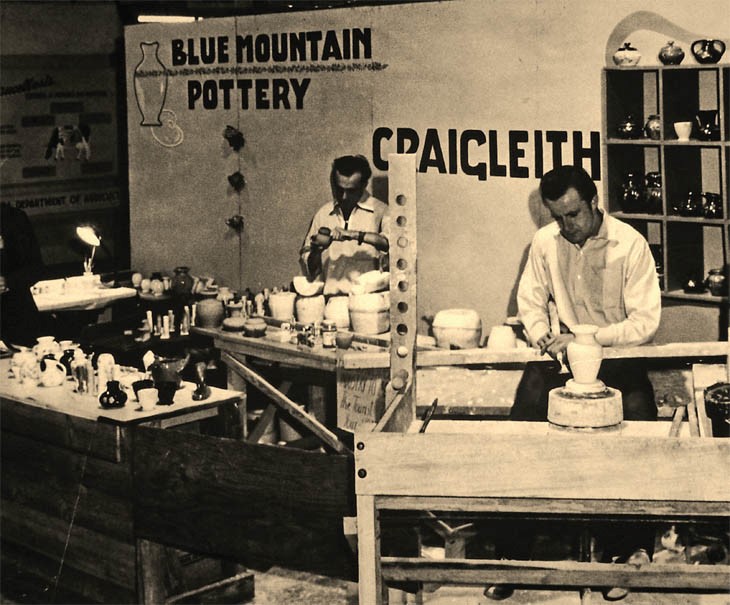
#5. WHEN POTTERY SAVED THE MOUNTAIN
Blue Mountain Pottery is collected around the world and was featured on a Canadian postage stamp. Blue founder Jozo Weider turned the clay he found while building ski trails, into a side industry to bolster finances during some lean years in the 1950s. The early work used a signature “flow glaze” technique, the blue-green shade reportedly an attempt to mimic the colour of Blue Mountain in the summer months. The 1960s saw studio lines including hand-thrown vases and a multi-piece Noah’s Ark Collection. This late-1950s photo shows master potter Dennis Tupy (right) who trained as a ceramicist in Czechoslovakia.
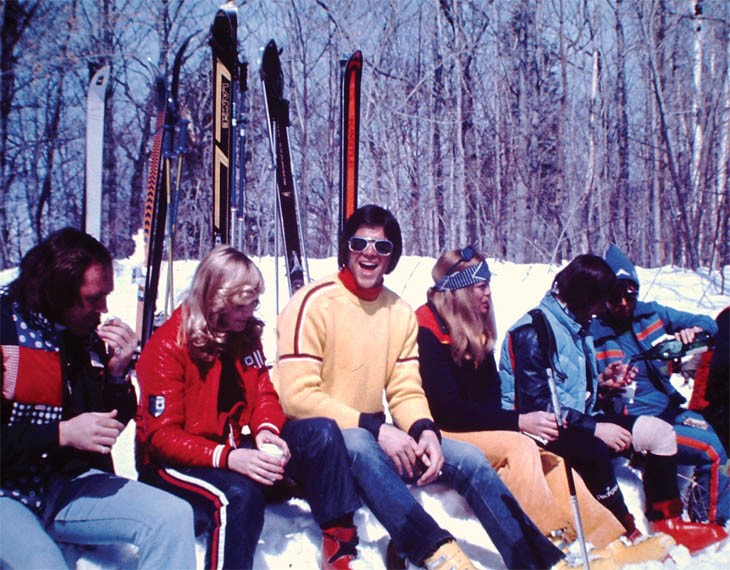
#6. THE DAYTIME DRINK
Why doesn’t anyone do this anymore? Hang out in the sun on the hilltop or mid-slope? And we’ve got snacks, not to mention a bottle of wine! ”
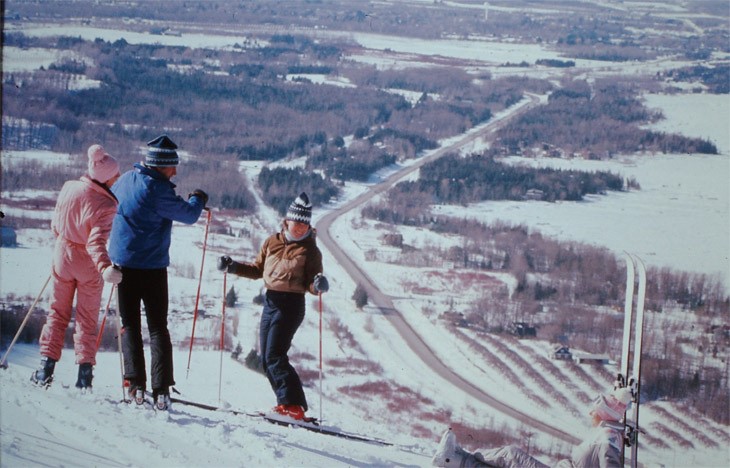
#7. WHEN BLUE BOUGHT THE PEAKS
Back in the day, it was the ultimate Superpass—two mountains, Blue and nearby club Georgian Peaks (rechristened simply “The Peaks”). Blue acquired The Peaks in 1981 and operated it until 1987. A bus shuttled lucky skiers back and forth between the two resorts.
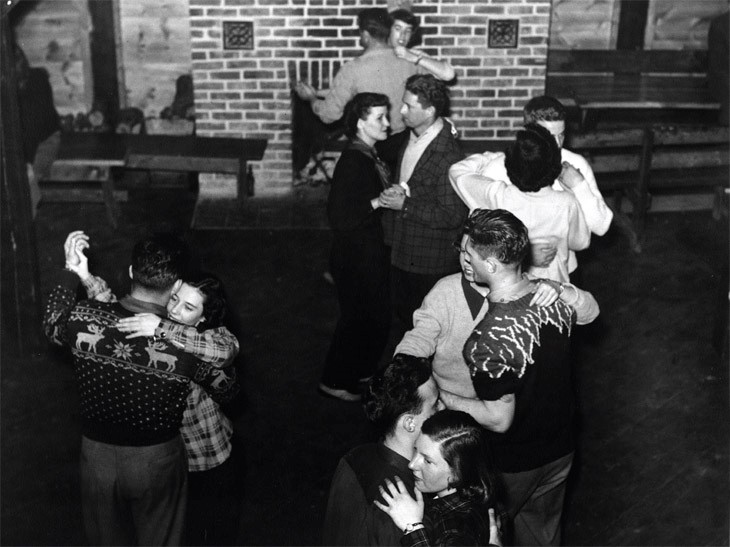
#8. DANCE AT THE SKI BARN
In 1949 Jozo Weider remodelled the Ski Barn from a farmer’s barn near where the Blue Mountain Inn sits today. The many uses for the building included dance hall, accommodation, cafeteria, and pottery in the basement.
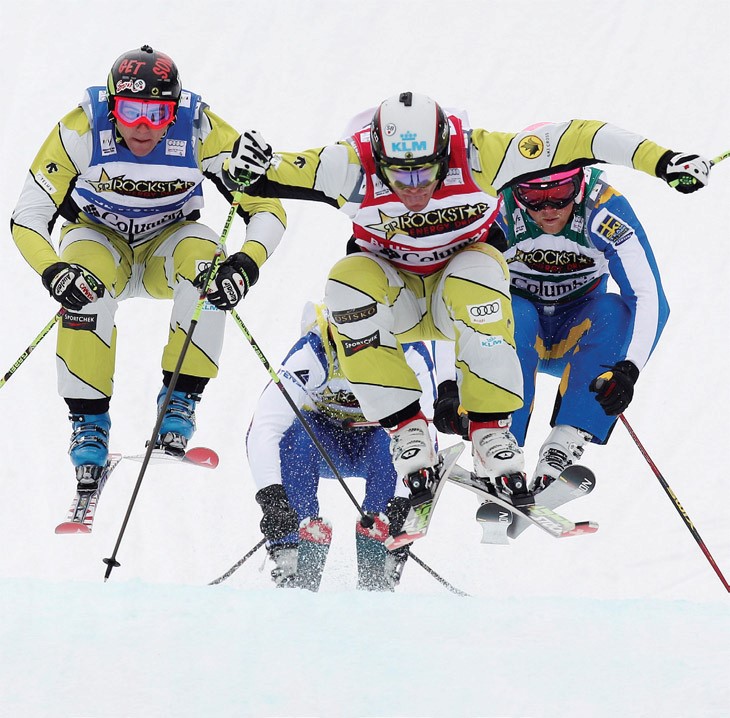
#9. THE WORLD COMES TO RIDE
When Ski Cross took off as a spectator-favourite sport at the Vancouver 2010 Olympics, the qualifying event took place at Blue (Ashleigh McIvortook second place, and went on to win Olympic Gold). This was the first World Cup Ski Cross event at Blue, but would not be the last. The Cup returned to Blue in 2011 and ’12 and will again in ’17. Meanwhile, the Snowboard Cross World Cup landed at Blue in ’12 and ’13. “Ski Cross is a pure form of racing,” says Ski Cross Canadian Champion Chris Del Bosco; “head to head, with lots of tactics involved.
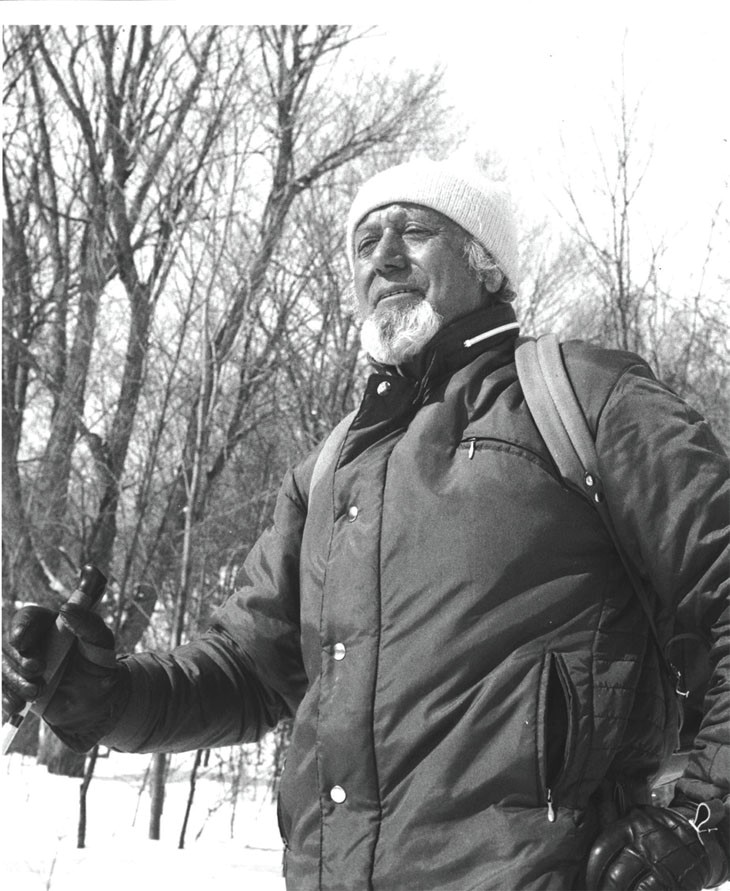
#10. THE MAN HIMSELF, JOZO WEIDER
The Slovak immigrant and BMR founder had the drive and enterprising nature that led the fledgeling resort through some shaky early years, before snowmaking and chairlifts brought consistent crowds. In order to establish the resort, he brought to bear his innumerable skills, including construction, farming, culinary arts, pottery-making, ski instruction, marketing, and engineering. A polymath with vision, pluck and bottomless energy, Jozo Weider turned a hardscrabble farming village into one of Canada’s busiest outdoor destinations.
Mountain Life wishes to acknowledge the kind assistance of George Weider in the preparation of this article, in particular his book Blue Mountain (Boston Mills Press, 1990). And we apologise in advance for being unable to credit individual photographers throughout this article, since that information was in many cases not available. We have credited Blue Mountain Resorts (BMR) since all the photos, unless otherwise indicated, are housed in their archive. —Ed.
For more on the history of Blue Mountain Resort, check out: https://www.bluemountain.ca/mountain/history





